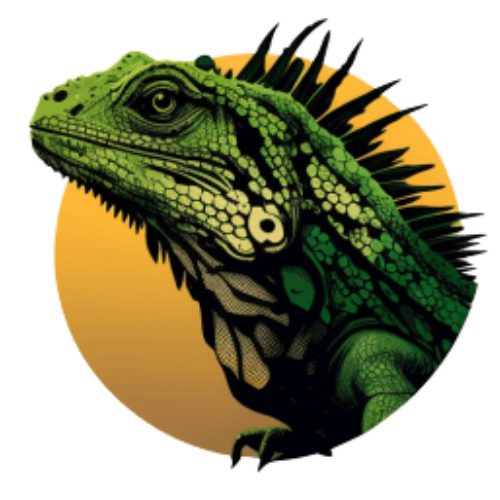Iguanas are fascinating reptiles that have captured the attention of many due to their unique appearance and behavior. Their evolutionary history is equally intriguing, offering insights into how these creatures have adapted and evolved over millions of years. Let’s embark on a journey to understand the evolutionary history of iguanas.
Origins: The First Iguanas
The earliest ancestors of modern iguanas are believed to have lived during the Late Cretaceous period, around 90 million years ago. Fossil evidence suggests that these early iguanas were smaller than their modern counterparts and inhabited regions that are now part of Asia and North America.
Diversification and Spread
Over time, as the continents drifted and climates changed, iguanas began to diversify and spread to different parts of the world. This diversification led to the emergence of two main families:
- Iguanidae: Commonly known as the New World iguanas, this family includes the green iguana and the lesser Antillean iguana. They are primarily found in Central and South America and the Caribbean.
- Crotaphytidae: This family consists of collared and leopard lizards, which are native to the deserts of the southwestern United States and northern Mexico.
Adaptations and Survival
Iguanas have undergone various adaptations to survive in their respective habitats:
- Camouflage: Many iguanas have developed skin colors and patterns that allow them to blend into their surroundings, protecting them from predators.
- Dietary Adaptations: While some iguanas are herbivores, like the green iguana, others have evolved to be insectivores or omnivores, depending on the availability of food in their habitat.
- Tail Autotomy: Iguanas have the ability to shed their tails when threatened. This adaptation allows them to escape from predators, as the detached tail continues to wriggle, distracting the predator.
Island Evolution: The Galápagos Iguanas
One of the most fascinating chapters in the evolutionary history of iguanas is their adaptation to the Galápagos Islands. Here, iguanas split into two main species:
- Marine Iguanas (Amblyrhynchus cristatus): These are the only sea-going lizards in the world. They have developed specialized adaptations, such as blunt noses for grazing on underwater algae and salt-excreting glands.
- Land Iguanas (Conolophus spp.): These iguanas are primarily herbivores and have a yellowish-brown color. They have evolved to eat cacti and other vegetation available on the islands.
Conservation Challenges
Unfortunately, many iguana species face threats from habitat loss, invasive species, and climate change. Conservation efforts are crucial to ensure the survival of these ancient reptiles.
Conclusion
The evolutionary history of iguanas is a testament to the power of adaptation and survival. From their early ancestors in the Cretaceous period to the diverse species we see today, iguanas have navigated the challenges of time and nature to remain one of the most iconic reptiles on our planet.




